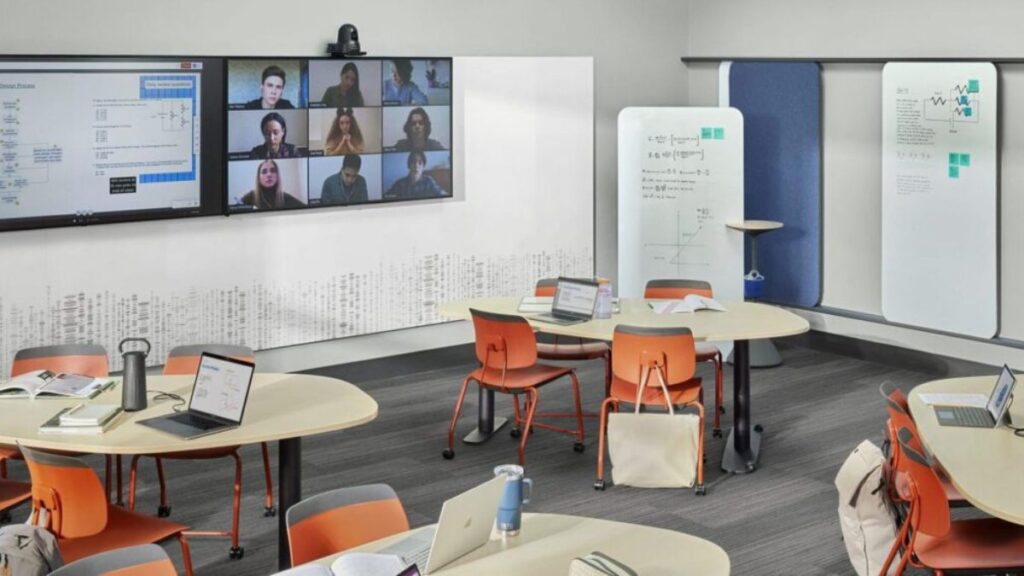Introduction
The traditional classroom, with its rows of desks and a teacher at the front, is undergoing a radical transformation. Enter Classroom 15X—a futuristic learning environment designed to enhance engagement, collaboration, and technological integration in education. The term “15X” symbolizes exponential growth in learning efficiency, where classrooms are no longer confined to four walls but extend into hybrid, flexible, and tech-driven spaces.
What is Classroom 15X?
Classroom 15X represents the next evolution of learning environments, where physical and digital spaces merge to create a dynamic, student-centered experience. Unlike traditional setups, 15X classrooms prioritize:
- Flexibility – Adaptable furniture and layouts for different learning styles.
- Technology Integration – AI, VR, AR, and IoT for immersive learning.
- Collaboration – Spaces designed for group work and peer learning.
- Sustainability – Eco-friendly designs with energy-efficient solutions.
The “15X” concept suggests that these classrooms are not just an incremental improvement but a 15-fold enhancement in learning outcomes through innovation.
Key Features of Classroom 15X
1. Smart Furniture and Modular Design
Gone are the days of fixed desks and chairs. Classroom 15X incorporates:
- Adjustable seating (standing desks, movable chairs)
- Modular tables for group configurations
- Soundproof pods for focused learning
2. Advanced EdTech Tools
Technology is at the heart of 15X classrooms, featuring:
- Interactive Whiteboards & Smart Displays – Touch-enabled screens for real-time collaboration.
- AI-Powered Learning Assistants – Chatbots and adaptive learning platforms.
- VR & AR for Immersive Lessons – Virtual labs, historical simulations, and 3D modeling.
- IoT Devices – Sensors that adjust lighting, temperature, and air quality for optimal learning conditions.
3. Hybrid and Blended Learning Capabilities
Classroom 15X supports both in-person and remote learning with:
- High-definition video conferencing tools
- Cloud-based collaboration platforms (Google Classroom, Microsoft Teams)
- Asynchronous learning options for self-paced education
4. Student-Centered Learning Approaches
Instead of a one-size-fits-all model, 15X classrooms focus on:
- Personalized Learning Paths – AI-driven recommendations based on student performance.
- Project-Based Learning (PBL) – Hands-on, real-world problem-solving.
- Gamification – Badges, leaderboards, and interactive quizzes to boost engagement.
5. Sustainability and Well-Being
Modern classrooms are also designed with mental and environmental health in mind:
- Natural lighting and biophilic designs (plants, green walls)
- Energy-efficient lighting and solar-powered devices
- Mindfulness zones for stress relief
The Role of Technology in Classroom 15X
Technology is the backbone of Classroom 15X, enabling:
- Real-Time Feedback – AI tools analyze student responses instantly.
- Global Collaboration – Students can work with peers worldwide via digital platforms.
- Accessibility – Assistive tech for students with disabilities (speech-to-text, screen readers).
- Data-Driven Teaching – Analytics help educators tailor lessons to student needs.
Benefits of Classroom 15X
1. Enhanced Student Engagement
Interactive tools and gamified lessons make learning more exciting.
2. Improved Collaboration
Flexible seating and digital platforms encourage teamwork.
3. Personalized Learning Experiences
AI adapts to each student’s pace and learning style.
4. Future-Ready Skills Development
Students gain tech literacy, critical thinking, and problem-solving abilities.
5. Teacher Empowerment
Educators spend less time on administrative tasks and more on mentoring.
Challenges in Implementing Classroom 15X
Despite its advantages, transitioning to 15X classrooms comes with hurdles:
- High Costs – Advanced tech and furniture require significant investment.
- Teacher Training – Educators need professional development to use new tools effectively.
- Digital Divide – Not all students have equal access to devices and high-speed internet.
- Resistance to Change – Some institutions may hesitate to abandon traditional methods.
The Future of Classroom 15X
As education evolves, we can expect:
- More AI Integration – Predictive analytics for early intervention in student struggles.
- Wider Adoption of VR/AR – Virtual field trips and holographic teachers.
- Blockchain for Credentials – Secure digital diplomas and skill certifications.
- Global Classroom Networks – Cross-border collaborative projects.
Conclusion
Classroom 15X is not just a trend—it’s the future of education. By blending cutting-edge technology, flexible designs, and student-centered approaches, these learning spaces promise to revolutionize how we teach and learn. While challenges exist, the potential for 15X improvements in engagement, retention, and skill development makes this transformation essential for preparing students for a rapidly changing world.
The question is no longer if Classroom 15X will become the norm, but how soon schools and institutions can adapt to this new era of learning.






